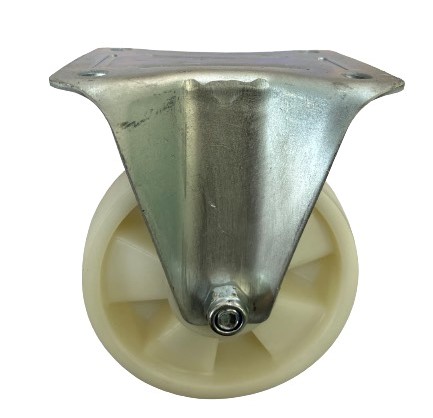Caster wheels are essential components in various industries, providing mobility and maneuverability for equipment and machinery. Proper maintenance not only extends the lifespan of caster wheels but also ensures safe and efficient operation. In this blog, we will explore maintenance tips recommended by leading caster wheel manufacturers to help you optimize performance and durability.
Importance of Caster Wheel Maintenance
Effective maintenance practices are crucial for maximizing the longevity and performance of industrial caster wheels. Regular maintenance not only prevents premature wear and tear but also minimizes downtime and operational disruptions. Whether you use caster wheels in manufacturing facilities, hospitals, warehouses, or retail environments, implementing these maintenance tips can significantly benefit your operations.
1. Inspect Regularly
Routine inspections are the foundation of effective caster wheel maintenance. Inspect caster wheels regularly for signs of wear, damage, or buildup of debris. Check for loose bolts, worn-out bearings, and any abnormalities in the wheel or swivel mechanism. Early detection of issues allows for timely repairs or replacements, preventing more extensive damage and costly downtime.
2. Clean Thoroughly
Cleanliness is essential for maintaining caster wheel performance. Clean wheels regularly to remove dirt, dust, grease, and other debris that can impair operation. Use a mild detergent solution and a brush to clean both the wheels and the swivel mechanisms. Avoid harsh chemicals that may damage the wheel materials or bearings. After cleaning, ensure the wheels are completely dry before putting them back into service.
3. Lubricate Moving Parts
Proper lubrication is critical for ensuring smooth and efficient operation of caster wheels. Lubricate bearings, axles, and swivel joints according to the manufacturer’s recommendations. Use high-quality lubricants that are compatible with the wheel materials and environmental conditions. Over-lubrication can attract dirt and debris, so apply lubricants sparingly and wipe off excess.
4. Check Load Capacity Limits
Exceeding the load capacity of caster wheels can lead to premature wear and potential failure. Be aware of the maximum load capacity specified by the manufacturer and ensure that loads are within these limits. Consider factors such as dynamic loads, shock loads, and uneven weight distribution when calculating load capacity requirements. Using wheels with a higher load rating than necessary can provide added durability and safety margins.
5. Inspect Floor Conditions
The condition of the floor surface can impact caster wheel performance and longevity. Inspect the floor regularly for obstacles, debris, or uneven surfaces that could cause excessive wear or damage to the wheels. Smooth out rough patches or uneven flooring to ensure smooth rolling and reduce stress on the wheels. Consider using floor mats or protective coatings to minimize wear and provide a smoother rolling surface.
6. Replace Worn-Out Parts Promptly
Components such as wheels, bearings, and swivel assemblies have a finite lifespan and will eventually wear out over time. Monitor the condition of these components during regular inspections and replace worn-out parts promptly. Using genuine replacement parts from the original manufacturer ensures compatibility and maintains the performance and safety of the caster wheels.
7. Implement Proper Storage Practices
When caster wheels are not in use, proper storage practices can help maintain their condition and extend their lifespan. Store wheels in a clean, dry environment away from direct sunlight, moisture, and extreme temperatures. Use protective covers or containers to shield wheels from dust and debris. Avoid stacking heavy objects on top of stored wheels, as this can cause deformation or damage.
8. Follow Manufacturer Guidelines
Every caster wheel manufacturer provides specific maintenance guidelines and recommendations. Follow these guidelines meticulously to ensure optimal performance and longevity of your caster wheels. Manufacturers may offer maintenance schedules, lubrication charts, and troubleshooting tips tailored to their products. Adhering to these guidelines not only preserves warranty coverage but also ensures that your caster wheels operate at peak efficiency.
Conclusion
Effective maintenance practices are essential for maximizing the performance, durability, and safety of industrial caster wheels. By implementing routine inspections, thorough cleaning, proper lubrication, and timely repairs, you can extend the lifespan of caster wheels and optimize their operational efficiency. Partnering with a leading caster wheel manufacturer and exporter ensures access to high-quality products and expert guidance on maintenance best practices. Investing in proactive maintenance not only reduces costs associated with repairs and replacements but also enhances productivity and safety in your workplace. Incorporate these maintenance tips into your operations to reap the full benefits of well-maintained caster wheels.

